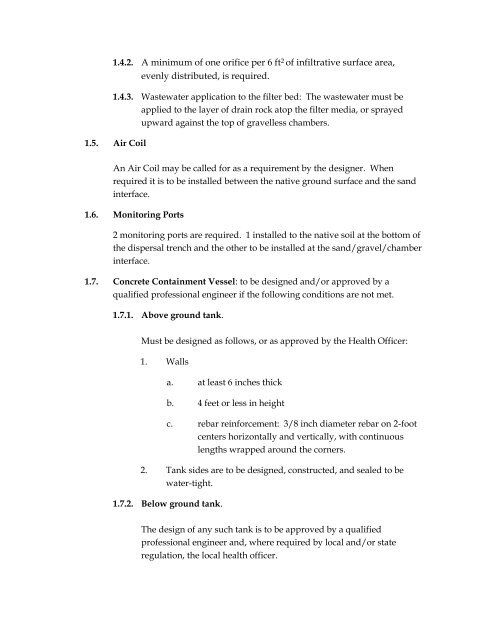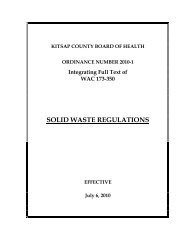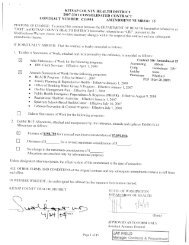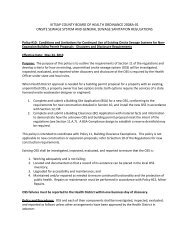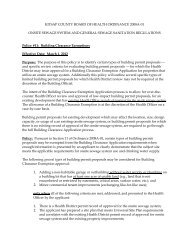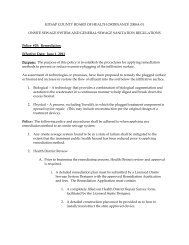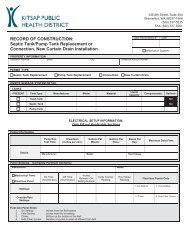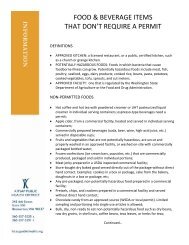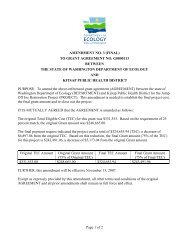Construction Standards for Sand Lined Trench Systems
Construction Standards for Sand Lined Trench Systems
Construction Standards for Sand Lined Trench Systems
Create successful ePaper yourself
Turn your PDF publications into a flip-book with our unique Google optimized e-Paper software.
1.4.2. A minimum of one orifice per 6 ft 2 of infiltrative surface area,<br />
evenly distributed, is required.<br />
1.4.3. Wastewater application to the filter bed: The wastewater must be<br />
applied to the layer of drain rock atop the filter media, or sprayed<br />
upward against the top of gravelless chambers.<br />
1.5. Air Coil<br />
An Air Coil may be called <strong>for</strong> as a requirement by the designer. When<br />
required it is to be installed between the native ground surface and the sand<br />
interface.<br />
1.6. Monitoring Ports<br />
2 monitoring ports are required. 1 installed to the native soil at the bottom of<br />
the dispersal trench and the other to be installed at the sand/gravel/chamber<br />
interface.<br />
1.7. Concrete Containment Vessel: to be designed and/or approved by a<br />
qualified professional engineer if the following conditions are not met.<br />
1.7.1. Above ground tank.<br />
Must be designed as follows, or as approved by the Health Officer:<br />
1. Walls<br />
a. at least 6 inches thick<br />
b. 4 feet or less in height<br />
c. rebar rein<strong>for</strong>cement: 3/8 inch diameter rebar on 2-foot<br />
centers horizontally and vertically, with continuous<br />
lengths wrapped around the corners.<br />
2. Tank sides are to be designed, constructed, and sealed to be<br />
water-tight.<br />
1.7.2. Below ground tank.<br />
The design of any such tank is to be approved by a qualified<br />
professional engineer and, where required by local and/or state<br />
regulation, the local health officer.


